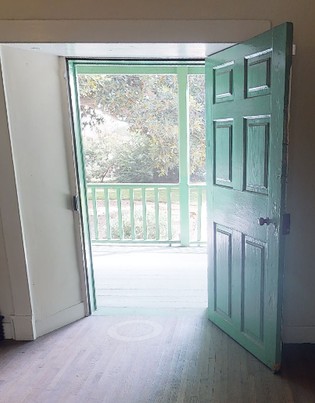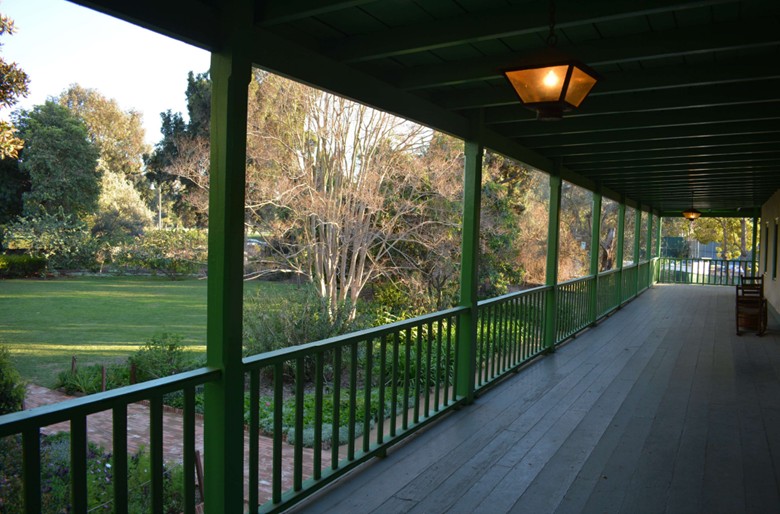RLC Adobe -- The Upper Veranda
Introduction
Text-to-speech Audio
Land use has changed dramatically over time, from the naturally arid landscape that sustained the Tongva people to the beautiful garden you see today. This land has been used for cattle and sheep ranching and as garden space to grow crops and raise livestock. Today, the remaining five acres serve as urban green space for recreation and relaxation.
After the Bixby family moved to Long Beach in 1884, they rented out the adobe and surrounding ranch land. The population of this region was growing, so the Bixby family leased thousands of acres for new farming communities (e.g. the American Colony) and towns (e.g. Wilmore City). They rented out the adobe itself, too.
The garden you see today reflects changes made when Lewellyn Bixby II remodeled the house in 1930-31. At that time, he hired landscape architect Ralph Cornell to beautify the grounds. Llewellyn Bixby II was also a charter member of the Virginia Country Club; the green gate between the two properties was his personal entrance to the VCC.
Images
Veranda Doorway

Veranda

Backstory and Context
Text-to-speech Audio
The two tallest trees you see in the backyard are not native to this land, they do date to the earliest days of ranching at RLC:
- Five Italian cypress trees were planted in John Temple’s time, and quickly became a landmark to travelers in the late 19th century (when large trees only grew near streams or rivers). We still have four of them in the garden today.
- The Bixby family added two Moreton Bay fig trees to the garden, circa 1881. They eventually grew together, creating an impressive canopy.
To learn more about the backyard and other garden spaces, please continue to follow theclio self-guided tour... or take a free guided tour with a Rancho Los Cerritos docent.
Cite This Entry
Maguire, Meighan and Clio Admin. "RLC Adobe -- The Upper Veranda." Clio: Your Guide to History. June 24, 2025. Accessed July 26, 2025. https://theclio.com/entry/24000/tour/18/reverse

